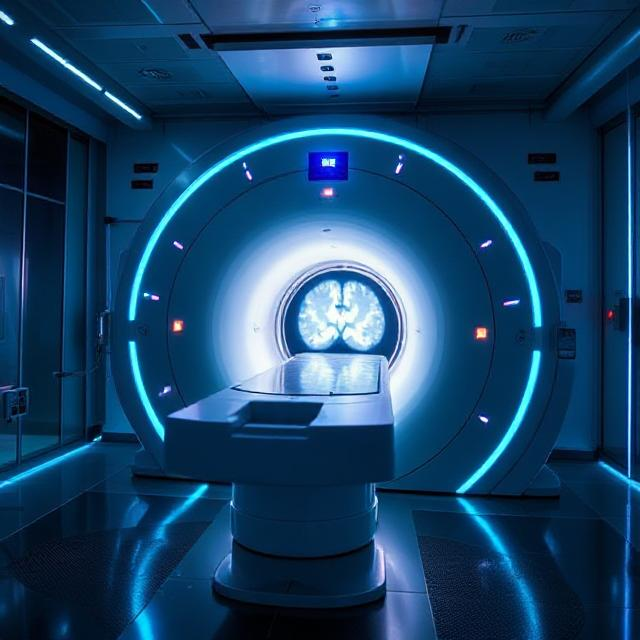
Superconducting magnets are at the forefront of modern scientific and technological breakthroughs. These powerful magnets, which rely on materials that exhibit zero electrical resistance at extremely low temperatures, are revolutionizing industries from medical imaging to particle physics. The development of high-field superconductors, advancements in quantum magnetic fields, and the role of superconductivity in particle physics are driving the next generation of innovations.
From MRI and superconducting tech in healthcare to the powerful Large Hadron Collider magnets that probe the mysteries of the universe, superconducting magnets are enabling new possibilities in science, engineering, and energy production. With continued progress in materials science and cryogenics, superconducting technology is becoming more efficient, affordable, and accessible, paving the way for future discoveries.
1. High-Field Superconductors Breaking New Limits
Traditional superconducting materials, such as niobium-titanium (NbTi), have long been the standard for superconducting magnets. However, newer high-field superconductors are pushing the limits of what is possible by allowing for stronger magnetic fields at higher temperatures.
One of the biggest advancements in this field is the development of high-temperature superconductors (HTS) like yttrium barium copper oxide (YBCO) and bismuth strontium calcium copper oxide (BSCCO). Unlike conventional superconductors, which require cooling with liquid helium, HTS materials operate at higher temperatures, reducing cooling costs and improving efficiency.
These new superconductors are enabling next-generation applications, from more powerful medical imaging systems to fusion reactors. Research facilities are exploring how high-field superconductors can be used to develop compact, high-performance magnets for a variety of industries.

2. Quantum Magnetic Fields and Their Role in Superconductivity
Superconductors exhibit unique properties when exposed to quantum magnetic fields, allowing them to generate intense magnetic forces without electrical resistance. The Meissner effect, a fundamental property of superconductors, enables them to expel external magnetic fields, leading to perfect diamagnetism.
Quantum mechanics plays a crucial role in superconductivity, particularly in the phenomenon of flux pinning. In high-temperature superconductors, tiny defects within the material trap magnetic field lines, stabilizing their superconducting state. This effect allows superconducting magnets to maintain strong, stable fields for long periods, making them ideal for scientific and industrial applications.
Advancements in quantum magnetic fields are driving improvements in magnet performance, increasing efficiency in everything from energy storage to transportation. Scientists are exploring ways to harness these effects for quantum computing, space exploration, and advanced propulsion systems.

3. Superconductivity in Particle Physics and the Search for New Discoveries
One of the most important applications of superconducting magnets is in superconductivity in particle physics. High-energy physics experiments require powerful magnets to steer and focus charged particles at nearly the speed of light.
The Large Hadron Collider (LHC) at CERN relies on thousands of superconducting magnets to guide protons along its 27-kilometer ring. These magnets generate fields exceeding 8 Tesla, allowing for high-energy collisions that help scientists study the fundamental building blocks of the universe.
New developments in superconducting technology are pushing particle physics even further. The proposed Future Circular Collider (FCC) aims to use next-generation superconducting materials to reach collision energies much higher than the LHC, potentially unlocking new particles and expanding our understanding of fundamental forces.
4. MRI and Superconducting Tech in Medical Imaging
Superconducting magnets play a crucial role in modern medicine, particularly in MRI and superconducting tech. Magnetic resonance imaging (MRI) relies on powerful superconducting magnets to generate detailed images of the human body.
Advancements in MRI technology are making these systems more powerful and accessible. High-field MRI machines operating at 7 Tesla and above provide unprecedented image resolution, allowing doctors to detect conditions earlier and with greater accuracy.
Researchers are also working on compact, low-cost superconducting magnets for portable MRI devices. These developments could revolutionize medical diagnostics, bringing advanced imaging technology to remote areas and improving accessibility for patients worldwide.

5. Large Hadron Collider Magnets and the Future of Particle Acceleration
The Large Hadron Collider magnets are among the most sophisticated superconducting magnets ever built. These powerful magnets allow physicists to recreate conditions similar to those that existed just after the Big Bang, helping to uncover new particles and test theories of fundamental physics.
The next generation of particle accelerators aims to use even stronger superconducting magnets. Scientists are developing new superconducting materials that can operate at higher fields while maintaining stability. These advancements could enable the construction of more compact, energy-efficient colliders that push the boundaries of particle physics.
6. Superconducting Magnets in Fusion Energy Research
One of the most exciting applications of superconducting magnets is in fusion energy research. Magnetic confinement fusion reactors, such as ITER and SPARC, rely on superconducting magnets to contain and control plasma at extremely high temperatures.
High-temperature superconductors are playing a key role in improving the efficiency of fusion reactors. By generating stronger magnetic fields with less power consumption, these materials bring us closer to achieving practical nuclear fusion—a potential source of limitless, clean energy.
With continued advancements in superconducting materials and cooling technology, fusion reactors could become a reality within the next few decades, providing a sustainable energy source that reduces reliance on fossil fuels.
7. Magnetic Levitation and High-Speed Transport
Superconducting magnets are revolutionizing transportation through magnetic levitation (maglev) technology. High-speed maglev trains use superconducting magnets to levitate above the tracks, eliminating friction and enabling speeds of over 600 km/h (373 mph).
Countries like Japan and China are leading the way in maglev technology, with superconducting magnets allowing for quieter, more efficient, and environmentally friendly transportation. Future developments in superconducting materials could reduce costs and make maglev trains a common mode of transport worldwide.
In addition to trains, superconducting magnets are being explored for space travel, advanced propulsion systems, and hover-based transportation concepts. These innovations could reshape the way people and goods move across the planet.
8. The Future of Superconducting Magnets in Industry and Science
The next generation of superconducting magnets is set to drive advancements across multiple fields, from medicine to quantum computing. Scientists are working on room-temperature superconductors that could eliminate the need for costly cryogenics, making superconducting technology more accessible.
In industry, superconducting magnets are improving power grid efficiency, enabling more compact and powerful electric motors, and enhancing energy storage systems. In scientific research, new breakthroughs in superconducting materials could lead to discoveries in fundamental physics, chemistry, and materials science.
Superconducting magnets are at the heart of some of the most exciting technological developments of the 21st century. As materials science advances and engineering techniques improve, superconducting technology will continue to shape the future of medicine, transportation, energy, and space exploration.
If you want to read more: CLICK HERE
